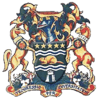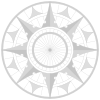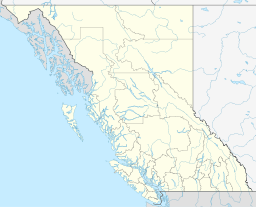Surrey, British Columbia
| Surrey | |||||||
|---|---|---|---|---|---|---|---|
| City | |||||||
| City of Surrey | |||||||
| |||||||
| |||||||
| Nickname(s): City of Parks | |||||||
| Motto: "The future lives here" | |||||||
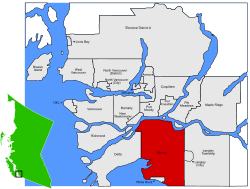 Location of Surrey | |||||||
| Coordinates: 49°11′N 122°51′W / 49.183°N 122.850°WCoordinates: 49°11′N 122°51′W / 49.183°N 122.850°W | |||||||
| Country | Canada | ||||||
| Province | British Columbia | ||||||
| Regional District | Metro Vancouver | ||||||
| Incorporation | 1879 (municipality status) | ||||||
| 1993 (city status) | |||||||
| Government | |||||||
| • Mayor | Linda Hepner | ||||||
| • City Council |
List of Councillors
| ||||||
| • MLAs |
List of MLAs
| ||||||
| • MPs |
List of MPs
| ||||||
| • School Trustees |
List of Trustees
| ||||||
| Area | |||||||
| • Total | 316.41 km2 (122.17 sq mi) | ||||||
| Highest elevation | 134 m (440 ft) | ||||||
| Lowest elevation | 0 m (0 ft) | ||||||
| Population (2014)[1] | |||||||
| • Total | 508,404 | ||||||
| • Rank | 12th | ||||||
| • Density | 1,600/km2 (4,200/sq mi) | ||||||
| Demonym(s) | Surreyite[2] | ||||||
| Time zone | PST (UTC-08) | ||||||
| • Summer (DST) | PDT (UTC-07) | ||||||
| Postal code span | V3R–V3X, V3Z, V4A, V4N, V4P | ||||||
| Area code(s) | 604, 778, 236 | ||||||
| Highways |
| ||||||
| Website |
www | ||||||
Surrey is a city in the province of British Columbia, Canada. It is a member municipality of the Metro Vancouver regional district and metropolitan area. Mainly a suburban city, Surrey is the province's third largest city by area, after Abbotsford and Prince George, and the second-largest city by population after the city of Vancouver.
The six "town centres" the City of Surrey comprises are: Fleetwood, Whalley/City Centre, Guildford, Newton, Cloverdale, and South Surrey.[3]
History
Surrey became incorporated in 1879, and encompasses land formerly occupied by a number of Halqemeylem-speaking aboriginal groups. When Englishman H.J. Brewer looked across the Fraser River from New Westminster and saw a land reminiscent of his native County of Surrey in England, the settlement of Surrey was placed on the map. The area then comprised forests of douglas-fir, fir, red cedar, hemlock, blackberry bushes, and cranberry bogs. A portion of present-day Whalley (named after Harry Whalley, who owned and operated a gas bar at the bend in King George Blvd, (formerly King George Highway) at 108 Avenue, "Whalley's Corner") was used as a burial ground by the Kwantlen (or Qw’ontl’en) Nation.
Settlers arrived first in Cloverdale and parts of South Surrey, mostly to farm, fish, harvest oysters, or set up small stores. Once the Pattullo Bridge was erected in 1937, the way was open for Surrey to expand. In the post-war 1950s, North Surrey's neighbourhoods filled with single family homes and Surrey (not yet a city) became a bedroom community, absorbing commuters who worked in Burnaby or Vancouver.
In the 1980s and 1990s, Surrey witnessed unprecedented growth, as people from different parts of Canada and the world, particularly Asia, began to make the municipality their home. Surrey is projected to surpass the city of Vancouver as the most populous city in BC by 2020 - 2030.[4]
Government and politics
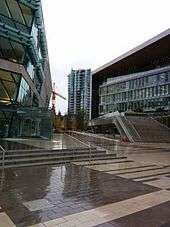
Surrey is governed by an eight-member city council. The current mayor of Surrey is Linda Hepner, who took office on December 8, 2014.[5] The last elections were held in November 2014.
In the recent 2009 provincial elections, the British Columbia New Democratic Party won four of Surrey's seats, all of them in the more urbanized north and centre of the city, while the BC Liberal Party won four seats in the more rural east and south.
Following the 2015 federal election, the Liberal Party of Canada holds three of Surrey's four seats in the Canadian House of Commons.
Demographics
| Population history | ||
|---|---|---|
| Year | Pop. | ±% |
| 1986 | 154,310 | — |
| 1991 | 208,706 | +35.3% |
| 1996 | 304,477 | +45.9% |
| 2001 | 347,825 | +14.2% |
| 2006 | 394,976 | +13.6% |
| 2011 | 468,251 | +18.6% |
| Source: Statistics Canada [6][6][7][7][8][9] | ||

As of 2006, the population of Surrey was 394,976, a 13.6% increase from 2001. The non-minorities population is 211,445, or 53.9% of the city's population. The foreign-born population is 150,235, constituting 30.3% of the city's population. Visible minorities number 181,005, or 46.1% of the population, while Aboriginal people constitute 1.9% of the population.[10][11] The City of Surrey estimated that 508,040 residents lived within its municipality in 2014.[12]
As of 2011, the racial makeup in Surrey is as follows:[10]
| Canada 2011 Census | Population | % of Total Population | |
|---|---|---|---|
| Visible minority group Source:[13] |
South Asian | 142,445 | 30.7% |
| Chinese | 28,480 | 6.1% | |
| Filipino | 26,480 | 5.7% | |
| Other Southeast Asian | 13,080 | 2.8% | |
| Korean | 8,385 | 1.8% | |
| Black | 6,150 | 1.3% | |
| Latin American | 5,340 | 1.2% | |
| Arab | 3,265 | 0.7% | |
| West Asian | 2,350 | 0.5% | |
| Japanese | 2,405 | 0.5% | |
| Other visible minority | 1,090 | 0.2% | |
| Mixed visible minority | 4,295 | 0.9% | |
| Total visible minority population | 243,760 | 52.6% | |
| Aboriginal group Source:[14] | First Nations | 6,135 | 1.3% |
| Métis | 4,225 | 0.9% | |
| Inuit | 175 | 0% | |
| Total Aboriginal population | 10,955 | 2.4% | |
| White | 208,625 | 45% | |
| Total population | 463,340 | 100% | |
Languages
The 2011 census found that English was spoken as mother tongue by 51.72% of the population. The next most common language was Punjabi, spoken by 20.17% of the population, followed by Tagalog at 2.8%.[15]
| Mother tongue | Population | Percentage |
|---|---|---|
| English | 240,485 | 51.72% |
| Punjabi | 93,785 | 20.17% |
| Tagalog | 8,785 | 2.95% |
| Hindi | 12,235 | 2.63% |
| Mandarin | 10,050 | 2.16% |
| Chinese, n.o.s. | 7,760 | 1.67% |
| Korean | 7,740 | 1.66% |
| Vietnamese | 6,035 | 1.30% |
| Spanish | 5,865 | 1.26% |
| German | 4,910 | 1.06% |
Economic indicators
As of 2010, Surrey had the highest median family income of CDN$78,283, while BC provincial median was $71,660, and national's median was $74,540. The average family income was $85,765.[16] South Surrey area had the highest average household income of all six town centres in Surrey, with an average of $86,824 as of 2010. Median household income was also high at $62,960.[17] South Surrey's neighbourhood of Rosemary Heights is the richest in Surrey and throughout the Metro Vancouver area, with a median income more than twice the regional average.[18]
As of 2010, the median household income of Surrey was $67,702 (versus the national median of $76,437), where 29.4% of households in Surrey earned a household total income of $100,000 or more, which is above the national average of 25.9%.[16][16][19]
Geography and climate
The city is characterized by low population density urban sprawl, typical of North American cities, which includes areas of residential housing, light industry and commercial centres and is prone to strip development and malls. Approximately 35 percent of the land is designated as part of the Agricultural Land Reserve. The city is mostly hills and flatland, with most of the flatland in Tynehead, Hazelmere, south of Cloverdale, and Colebrook.
The climate is typically inter-coastal Pacific-Northwest: rainy, wet winters, often with heavy rainfall lasting into early spring, with mild, sunny summers and cool autumns.
| Climate data for Surrey (1981−2010) | |||||||||||||
|---|---|---|---|---|---|---|---|---|---|---|---|---|---|
| Month | Jan | Feb | Mar | Apr | May | Jun | Jul | Aug | Sep | Oct | Nov | Dec | Year |
| Record high °C (°F) | 15.5 (59.9) |
19.4 (66.9) |
25.0 (77) |
29.0 (84.2) |
34.5 (94.1) |
33.3 (91.9) |
35.0 (95) |
34.5 (94.1) |
34.5 (94.1) |
29.0 (84.2) |
21.0 (69.8) |
16.7 (62.1) |
35.0 (95) |
| Average high °C (°F) | 6.7 (44.1) |
8.7 (47.7) |
11.7 (53.1) |
14.6 (58.3) |
17.9 (64.2) |
20.4 (68.7) |
23.1 (73.6) |
23.6 (74.5) |
20.9 (69.6) |
14.5 (58.1) |
8.7 (47.7) |
6.1 (43) |
14.7 (58.5) |
| Daily mean °C (°F) | 3.8 (38.8) |
5.1 (41.2) |
7.5 (45.5) |
10.0 (50) |
13.0 (55.4) |
15.6 (60.1) |
17.9 (64.2) |
18.2 (64.8) |
15.5 (59.9) |
10.4 (50.7) |
5.9 (42.6) |
3.4 (38.1) |
10.5 (50.9) |
| Average low °C (°F) | 0.9 (33.6) |
1.4 (34.5) |
3.3 (37.9) |
5.3 (41.5) |
8.0 (46.4) |
10.8 (51.4) |
12.5 (54.5) |
12.7 (54.9) |
10.0 (50) |
6.3 (43.3) |
3.1 (37.6) |
0.6 (33.1) |
6.2 (43.2) |
| Record low °C (°F) | −17.2 (1) |
−13.5 (7.7) |
−8.3 (17.1) |
−2.8 (27) |
−1.1 (30) |
2.2 (36) |
2.8 (37) |
−1.1 (30) |
−2.2 (28) |
−6.5 (20.3) |
−15.0 (5) |
−18.9 (−2) |
−18.9 (−2) |
| Average precipitation mm (inches) | 186.4 (7.339) |
124.8 (4.913) |
121.8 (4.795) |
109.8 (4.323) |
87.9 (3.461) |
72.1 (2.839) |
49.0 (1.929) |
42.0 (1.654) |
59.7 (2.35) |
138.5 (5.453) |
225.0 (8.858) |
182.1 (7.169) |
1,399.1 (55.083) |
| Average rainfall mm (inches) | 172.0 (6.772) |
117.4 (4.622) |
120.0 (4.724) |
109.5 (4.311) |
87.9 (3.461) |
72.1 (2.839) |
49.0 (1.929) |
42.0 (1.654) |
59.7 (2.35) |
138.1 (5.437) |
223.4 (8.795) |
169.9 (6.689) |
1,360.8 (53.575) |
| Average snowfall cm (inches) | 14.5 (5.71) |
7.4 (2.91) |
1.8 (0.71) |
0.3 (0.12) |
0.0 (0) |
0.0 (0) |
0.0 (0) |
0.0 (0) |
0.0 (0) |
0.4 (0.16) |
1.6 (0.63) |
12.2 (4.8) |
38.2 (15.04) |
| Average precipitation days (≥ 0.2 mm) | 19.3 | 16.0 | 17.8 | 16.2 | 14.3 | 12.7 | 8.4 | 7.4 | 8.3 | 16.3 | 22.2 | 19.4 | 178.0 |
| Average rainy days (≥ 0.2 mm) | 18.4 | 15.1 | 17.8 | 16.2 | 14.3 | 12.7 | 8.4 | 7.4 | 8.3 | 16.2 | 22.1 | 18.1 | 174.7 |
| Average snowy days (≥ 0.2 cm) | 2.2 | 1.6 | 0.55 | 0.10 | 0.0 | 0.0 | 0.0 | 0.0 | 0.0 | 0.11 | 0.56 | 2.4 | 7.4 |
| Source: Environment Canada[20] | |||||||||||||
Economy
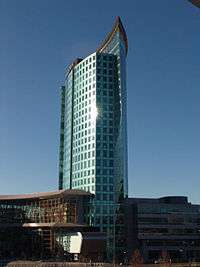
Surrey is one of the largest industrial centers within British Columbia, with a burgeoning high technology, clean energy, advanced manufacturing, health, education, agriculture, and arts sector.[21]
Universities
Two local, major post-secondary educational institutions, Simon Fraser University and Kwantlen Polytechnic University, received opportunities for expansion. In 2002, Simon Fraser University made an investment by opening a campus in Surrey, the SFU Surrey Campus, which acts a satellite campus operating as a public research university as well as providing further impetus for shaping the city. Kwantlen Polytechnic University was granted a university designation from the BC provincial government, upgrading itself from a community college to an official academic teaching institution that has become renowned in applied research.[22]
Agriculture
Farming has strongly been attached to the economic well-being of Surrey, as the city of Surrey itself fostered and cemented a robust culture of farming. Approximately a third of Surrey's land is preserved and designated as farmland that is utilized for the local production of food to cater the city's growing population as well as increasing employment opportunities via the creation of local jobs. Agriculture continues to invigorate Surrey's economy employing 3300 people or 1.6 percent of Surrey's overall labor force. Manufacturing is also a highly diversified sector where products are produced for developed and emerging industries that range from the cutting of lumber for various BC logging firms to constructing wind turbines as many Surrey-based environmental firms are capitalizing on the city's initiatives for the clean energy sector.[23][24]
Health care
The health sector makes a significant contribution to Surrey’s economy. Surrey is home to almost 900 health-related businesses where major focuses in several life science sub-sectors that include infectious diseases, marine bio-science, neuroscience, oncology and regenerative medicine. Surrey Memorial Hospital is the second largest employer in the City of Surrey with an annual operating budget of $149.2 million while the health care organization, Fraser Health employs more than 4,100 people and an additional 350 active physicians at SMH.[25]
Technology
Although not as large as Vancouver's technology sector, Surrey also has an emerging tech sector with a highly anticipated incubator that will potentially act as a base to jump-start ideas into various start-up companies from local innovators, inventors, investors and entrepreneurs. Leading companies include Powertech Labs, a clean energy subsidiary of BC Hydro which focuses on clean energy consulting, testing, and power solutions for the global electrical utility asset, smart grid and power systems, clean transportation, and distributed clean power markets. The company now employs 130 people. Another leading company is Safe Software, a company provides software focused on managing the exchange of spatial and non-spatial data between systems with differing file formats and structures. FINCAD also has a presence in Surrey, where it is leading provider of financial derivative pricing and business analytics. The company's financial analytics are used by more than 35,000 financial professionals in over 80 countries.[26]
Religion
The 2011 National Household Survey states, "The most frequently reported religious affiliation in Surrey was Sikh, reported by 104,720 (22.6%) of the population. Other frequently reported religions included: Roman Catholic (13.8%) and Christian, n.i.e. (7.6%). In comparison, the top three most frequently reported religions in British Columbia were: Roman Catholic (reported by 15.0% of the population of British Columbia), Christian, n.i.e. (7.2%) and United Church (5.1%)."[27]
Education
Of the city's population over the age of 25, 23.7% hold a bachelor's degree or higher, slightly below the national average of 25.8% and 47.2% work in professional and managerial jobs, compared with the national average of 52.7%.[16][19]
Schools
School District 36 Surrey oversees 100 public elementary and 21 public secondary schools, making it the largest public school district in British Columbia. The Conseil scolaire francophone de la Colombie-Britannique operates one Francophone school in that city: école Gabrielle-Roy, which includes primary and secondary levels.[28]
Private schools in Surrey include Calvary Christian Academy, Holy Cross Regional High School, Pacific Academy, Regent Christian Academy, White Rock Christian Academy, Surrey Christian School, and Southridge School. There are no public middle schools in Surrey, so a typical elementary school includes kindergarten through grade 7, and secondary school starts at grade 8 and continues through grade 12. There are around 65,000 students enrolled in public and private schools.
Higher education
Surrey is home to the third campus of Simon Fraser University, which opened its doors in Surrey in 2002. SFU took over the space and programming that was initially built for TechBC, a technical university proposed for south of the Fraser River by the then-NDP led provincial government. SFU Surrey offers a number of programs, including TechOne and Explorations; first-year cohort options; and studies in Health Science, Applied Sciences, Criminology, World Literature, Business Administration, and Interactive Arts and Technology.
Surrey is also the home of Kwantlen Polytechnic University, a polytechnic university that opened its doors in the Newton Town Centre of Surrey in 1981 as a response to the growing need for expanded vocational training across the Fraser Valley. Since then, it has expanded to provide satellite campuses in Richmond, Langley, a trades and technology centre in the Cloverdale Town Centre of Surrey. The Surrey campus offers university transfer, career-training and academic-upgrading programs with focuses on science, business, arts, and health, including a publicly accessible wellness centre, while the Cloverdale campus offers vocational training through apprenticeships for skilled trades and technical careers.
Surrey also has many private post-secondary institutions including Sprott Shaw College, CDI College, MTI Community College, Stenberg College, Academy of Learning, Surrey Community College, Discovery Community College and Vancouver Career College.
Culture
Attractions
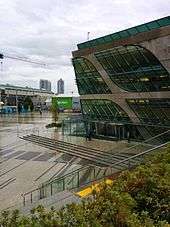
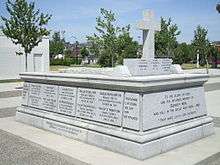
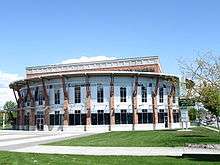
.jpg)
.jpg)
The Surrey Museum is affiliated with CMA, CHIN, and Virtual Museum of Canada.
The historic Surrey Municipal Hall complex includes the Cenotaph in Heritage Square, the Surrey Museum, and Cloverdale Library.
"REMEMBRANCE" by André Gauthier (sculptor) in Heritage Square, is an oversized bronze statue depicting a World War I kneeling soldier, helmet in hand, in remembrance of his fallen comrade.[29]
Events
Attracting 15,000 people every February since 2004, WinterFest is a day of live music, sporting activities, food, and fireworks, held at the Central City Plaza.
Since 1888, the town centre of Cloverdale has hosted the annual Cloverdale Rodeo and Country Fair at the Cloverdale Fairgrounds every May long weekend. The Fair is Canada's second largest rodeo, and it features 150 acres (0.61 km2) of family-oriented entertainment including agricultural/horticultural exhibits, a western tradeshow, parade, community stages, and the Pacific Northwest Firefighter Combat Challenge.
Due in part to having one of British Columbia's youngest populations, with nearly one-third of all citizens under 18, Surrey has become known for its annual Children's Festival, which began 2004. The free, multi-day festival features circus and clay arts, world rhythm music and movement, popular children's performers, storytelling sessions, and a parade.
Every year on April 13, the Sikh community celebrates Vaisakhi, which often includes a nagar kirtan, or parade, and free food is often handed out. Roughly 100,000 people attended in 2008.[30]
Surrey has the largest Canada Day event of its kind in Western Canada. Presented every July 1 at Cloverdale's Millennium Amphitheatre Park, the event includes amusement rides, a tea ceremony, booths, musicians and performers, and a fireworks show at night.
In 2008, the City, thanks to the federal government's designation of Surrey as Canada's Cultural Capital for the year, put on a three-day multicultural festival. The Fusion Festival celebrated over 60 different cultures through food, music, and dance. The event attracted 60,000 attendees, and will return for 2009. It is expected that the Fusion Festival will become an annual event for Surrey.
Following the success of the Surrey Regional Economic Summit, held in September 2008 at the Sheraton Vancouver Guildford Hotel, in Guildford Town Centre, it is anticipated that this too will become an annual event. The first summit featured BC Premier Gordon Campbell and VANOC CEO John Furlong as speakers and a keynote speech by former New York City Mayor Rudy Giuliani. The event attracted 400 business and community leaders for a day-long conference to discuss issues including public safety, transportation, and sustainability. The second summit is being planned, and will feature former British Prime Minister Tony Blair as keynote speaker.
Every October since 1991, Surrey has hosted the Surrey International Writers' Conference. This event brings established writers, agents, editors and publishers from all over the world to the Comfort Inn & Suites Surrey Hotel and Sheraton Vancouver Guildford Hotel in Guildford Town Centre.
The Surrey Festival of Dance, an annual event since 1966, is one of the largest dance competitions held in North America, with over 10,000 dancers participating in the multi-week festival.
There are presently three live theatre venues in the City of Surrey in British Columbia as of January 2013: the Bell Centre for Performing Arts, the Chandos Pattison Auditorium and the Surrey Arts Centre.[31]
The Surrey RCMP hold an annual basketball tournament with participation from all the city's secondary schools. The event is the city's largest annual sports tournament.
One of the lesser-known events in Surrey is the annual Nicomekl River Race. Every year, in early June, teams of four meet at Nicomekl Park in Langley, British Columbia to begin the race. Unlike most traditional boat races, the Nicomekl River Race requires that all boats be made by the participants. The racecourse extends from Nicomekl Park to Blackie Spit Park at Crescent Beach. The first team to reach the mouth of the river is awarded a prize of $1,000. Additional prizes are awarded to the most creative boat and costume. All proceeds go towards the BC Cancer society.
News media
In addition to news media from Vancouver, the community is served by The Surrey Now newspaper, the Surrey Leader newspaper, and the Peace Arch News newspaper (for South Surrey). The city is also home to South Asian Broadcasting's ethnic radio station ReD-FM and the Asian Journal newspaper. The first Surrey-based English-language radio station, My Surrey FM 107.7 FM, was licensed by the CRTC in 2014.[32] Radio India, another Indo-Canadian radio station, has its offices in Surrey.[33]
Sports
Every summer, Surrey hosts the Canada Cup International Women's Fastpitch Tournament. It began in 1993 as an international women's fastpitch developmental softball tournament to help teams prepare for the Olympics by facing top-calibre competition. The event continues to be a fan favourite with gate attendance reaching 93,000 for the nine-day tournament in 2004.
The BCHL Surrey Eagles hockey team plays at the South Surrey Arena in Surrey. The Eagles won the BCHL championship, the Fred Page Cup, in 1997, 1998, 2005 and 2013; the western championship, the Doyle Cup, in 1997 and 1998; and the national championship, the Royal Bank Cup, in 1998.
Surrey hosted the Canadian national qualifying tournament in 2006, and sends a local team to compete for a spot in the Little League World Series in Williamsport, Pennsylvania.
Surrey is also home to Canada's first kabaddi-specific stadium.[34]
Transportation
History
The first settlement of Surrey was Crescent Beach, in South Surrey, and Bridgeview/Brownsville, in North Surrey. Early trails and roads helped to encourage the settlement of Surrey. The first trail built by a settler was the 1861 the Kennedy Trail. James Kennedy built the trail to provide a route between New Westminster and the natural pasture land on the Mud Bay Flats next to the Serpentine River.[35] The Semiahmoo Wagon Road was built in 1873 between Brownsville opposite New Westminster and Semiahmoo (Blaine).[36] The first regular ferry service across the Fraser River started in 1882 on the steam ferry K de K with the point of departure at Brownsville.[37] The ferry landed on the Surrey side at the start of the Old Yale Road, which connected directly inland to Yale, and was a major gold rush trail.
The New Westminster Rail Bridge was opened in 1904, allowing personal vehicles to cross the Fraser River on the upper deck. The lower deck, for rail, enabled BC Electric Railway to finally construct the Interurban line, an electric suburb commuter rail route connecting Chilliwack to Vancouver. It opened for service in 1910, and ran through Kennedy, Newton, Sullivan, and Cloverdale. Currently, two of the BCER cars (1225 & 1304) are nearly finished being restored for operation on the mainline between Cloverdale and Sullivan. New car barns and museum currently under construction in Cloverdale(as of 2012)[38]
In 1937, the then two-lane Pattullo Bridge linking New Westminster and Surrey was opened.
In the early 1950s, BC Electric Railways ceased operating its interurban line, thus increasing the number of vehicles on Surrey roads. Highway 10 was built in 1953, and Highway 15 in 1957. In 1964, the provincial government completed Highway 401 and the Port Mann Bridge; that section of roadway would later be renamed Highway 1. In 1959, the George Massey Tunnel was opened, along with what is known as Highway 99. With the completion of the new Highways 1 and 99, the Fraser Highway and King George Boulevard became major arteries.
In the early 1990s, Surrey saw the return of rail transit with the SkyTrain Expo Line expansion into Surrey. The four stations added were Scott Road, Gateway, Surrey Central (and bus loop) and King George.

Current transportation network
The Canadian National Railway, Canadian Pacific Railway, BNSF Railway, and Southern Railway of British Columbia have trackage running through Surrey.
Public transport, operated by TransLink, connects some of Surrey's centres to each other and to other Lower Mainland municipalities. The SkyTrain Expo Line provides 35-minute service to Downtown Vancouver via four stations: Scott Road, Gateway, Surrey Central (also a bus loop), and King George.
Vancouver International Airport is located 28 kilometres (17 mi) west of Surrey. Vancouver International Airport offers direct daily service to destinations in Canada, North America, Europe, and Asia.
Bellingham International Airport is located 32 kilometres (20 mi) south of Surrey, and offers connections to Seattle, Las Vegas, and Hawaii.
Abbotsford International Airport is located 24 kilometres (15 mi) east of Surrey, and offers daily flights to Calgary and Edmonton.
Seaport facilities are available at the Fraser River Docks.[39]
Future transportation
As of 2015, the City of Surrey is proposing to build three light rail lines radiating from Surrey City Centre.[40]
Sustainable development
In 2008, Surrey city council created and adopted the Surrey Sustainability Charter:[41] a comprehensive document spanning 72 pages that takes a comprehensive look at all facets of society and creates an overarching document to guide the urban development of the city for the next 50 years. In 2011, the city council released the second update to the 2008 document indicating the progress made in the three years since the inception of the report.[42]
Hurdles
Being an all inclusive plan requires an interplay of many complex and sometimes wicked problems. Trying to account for all problems is ambitious, and as the report admits, being at the municipal level reduces the funding, power and resources to implement the vision. The report acknowledges the political hurdle and notes that the city needs to influence players with more power such as the provincial or federal government in order for the vision to be successful. Some other hurdles that have arisen since the inception of the charter include the following:
Suburban sprawl and the Gateway Program

Surrey currently faces the problem of Urban Sprawl, the phenomenon that is characterized by the low density residential, with almost no commercial or industrial zoning. This results in a heavy outflow of traffic in the morning, and inflow in the evening.
The announcement of the Gateway Program in 2005 by the British Columbia Ministry of Transportation meant a large expenditure in transportation infrastructure. Despite the oppositions by the Metro Vancouver and several mayoral councils,[43][44] the project went ahead to create the South Fraser Perimeter Road and the Port Mann Bridge, both which pass through major portions of Surrey. It has been criticized to be contradictory to not only Metro Vancouver's Sustainable Region Initiative,[45] but also Surrey's Sustainability Charter. Studies have shown that with an increase in road capacity, generated traffic increases, that is traffic that is diverted (shifted in time and route) and induced travel (increased total motor vehicle travel).[46] With the construction of the 10 lane Port Mann Bridge, the problem of suburban sprawl is exacerbated not only with the additional capacity, but RapidBus service was also cancelled despite expectations of a stop in Surrey.[47]
Transportation and land use
The Sustainability Charter hinges on a large reduction on automobile dependency requiring a well established transit infrastructure to the multiple districts of Surrey. In 2008, Gordon Campbell announced the extension of the Expo Line beyond the current terminus to as far as Langley.[48] However, financial shortfall came upon Translink shortly after, and many of the announced plans came to a halt. Plans to expand northward via the Evergreen Line came to fruition prior the vision of extending light rail out to Guildford, Newton and Langley. Trying to make ends meet, Mayor Watts attempts to impose equal tolling across the region to assist with funding transit to reduce car reliance.[49]
Protecting agricultural land reserves also play an important part in the charter of sustainability. The idea behind the agricultural land reserves is to encourage and increase the role of urban agriculture thus reducing the reliance of food transport and increasing the quality and availability of food to local people. The Charter takes the idea one step further by bringing in value adding food processing agribusiness to complete the supply chain circle.[50]
In a case study of Toronto completed by Pierre Filion, he claims that while transit and natural area conservation are successful at achieving their respective immediate objectives, they "do not modify metropolitan-wide relations between transportation and land use...in a fashion that is consistent with smart growth". Filion identifies that the largest obstacles are NIMBY reactions from the public and the limited finances from the public sector.[51]
Notable people
| Athletes | Artists | Politicians | Other |
|---|---|---|---|
| Nuvraj Bassi, professional football player | Carolyn Arends, singer-songwriter and author | Harry Bains, politician | Ryan D'Arcy, neuroscientist researcher at SFU & Surrey Memorial Hospital |
| Brenden Dillon, professional hockey player; defenseman for the San Jose Sharks | Moiez Babar, electronic dance music producer and DJ | Jagrup Brar, politician | Baltej Singh Dhillon, former RCMP officer and the first Royal Canadian Mounted Police officer to be allowed to wear a turban |
| Colin Fraser, professional hockey player | Jean-Luc Bilodeau, actor | Margaret Bridgman, politician | Nolan Watson, businessman, philanthropist, and humanitarian. Founder of Sandstorm Resources Ltd. and the youngest CFO of a multimillion-dollar company listed on the New York Stock Exchange |
| Curtis Fraser, retired Canadian professional ice hockey centre (Peoria Rivermen, Chicago Wolves, Lake Erie Monsters and San Antonio Rampage) | Lisa Brokop, singer | Chuck Cadman, politician | cell |
| Scott Hannan, professional hockey player; defenceman for the San Jose Sharks | Gina Choi, K-pop singer and songwriter | Dona Cadman, politician | cell |
| Daniel Igali, 2000 Olympic gold medallist freestyle wrestler | Ranj Dhaliwal, author | Narima dela Cruz, politician and activist | cell |
| Sydney Leroux, professional soccer player[52] | Elise Estrada, singer-songwriter and actress | Sukh Dhaliwal, politician | cell |
| Adam Loewen, baseball player; first baseman/outfielder under minor-league contract for the Toronto Blue Jays | Emmalyn Estrada, singer, songwriter, and actress; younger sister of Elise Estrada | Kevin Falcon, MLA for Surrey-Cloverdale | cell |
| Alen Marcina, retired professional soccer player, current coach of San Antonio Scorpions | Kamal Heer, Punjabi singer | Peter Fassbender, Langley Mayor & MLA for Surrey-Fleetwood | cell |
| Victoria Moors, former artistic gymnast who represented Canada at the 2012 Summer Olympics | Jacob Hoggard, lead singer of Hedley | Gurmant Grewal, politician and the first minority politician elected in Surrey | cell |
| Gary Nylund, former professional hockey player (Toronto Maple Leafs, Chicago Blackhawks, and New York Islanders) | Britt Irvin, actress, singer, voice-over artist; 2008 Leo Award nominee | Nina Grewal, first married couple (with her husband Gurmant) elected to concurrently serve in Parliament | cell |
| Shallon Olsen, Olympic artistic gymnast | Harbhajan Mann, Punjabi singer | Dave Hayer, politician | cell |
| Prab Rai, hockey player drafted by the Vancouver Canucks in 2008. Currently playing for the Kalamazoo Wings | Debi Makhsoospuri, Punjabi songwriter/artist | Russ Hiebert, politician | cell |
| Geroy Simon, former CFL player.(BC Lions and Saskatchewan Roughriders) | Laura Mennell, actress | Penny Priddy, federal, provincial, municipal politician | cell |
| Kalib Starnes, professional mixed martial artist | Missy Peregrym, actress and former fashion model | Jinny Sims, politician | cell |
| John Tenta, professional wrestler, known as Earthquake | Gordon Rice, artist | Jasbir Sandhu, Member of Parliament in the 41st Parliament | cell |
| Aaron Voros, professional hockey player; forward for the Toronto Maple Leafs | Paul Rodgers, singer known for his success in the 1970s as vocalist of Free and Bad Company | Gulzar Singh Cheema, physician and politician | cell |
| cell | Sangtar, Punjabi songwriter | Jasbir Singh Cheema, television personality and politician | cell |
| cell | Manmohan Waris, Punjabi singer | Heather Stilwell, political activist | cell |
| cell | Daniel Wesley, singer-songwriter | cell | cell |
Affiliated cities and municipalities
Surrey has two sister cities:
| Country | City | Province | Date |
|---|---|---|---|
| |
Kōtō | Tokyo | 1989 |
| |
Zhuhai | Guangdong | 1989 |
Surrey also has two Friendship Cities:
| Country | City | Province | Date |
|---|---|---|---|
| |
Ningbo | Zhejiang | |
| |
Taicang | Jiangsu |
References
- ↑ "City of Surrey Population Estimates & Projections". City Of Surrey. 2014. Retrieved June 10, 2015.
- ↑ "Demonyms—From coast to coast to coast". Language Portal of Canada. Government of Canada. Retrieved March 30, 2012.
- ↑ http://www.surrey.ca/Visiting+Surrey/About+Surrey/Surrey+Is.htm Archived September 11, 2007, at the Wayback Machine.
- ↑ Jill Bennett (June 18, 2013). "Surrey's population projected to surpass Vancouver's". Global News. Retrieved 29 September 2015.
- ↑ "Inaugural Ceremony of New Mayor and Council". Retrieved March 25, 2016.
- 1 2 "Population Estimates". Province of British Columbia. Retrieved October 13, 2014.
- 1 2 "Population and Dwelling Counts, for Canada, Provinces and Territories, and Census Divisions, 2001 and 1996 Censuses – 100% Data (British Columbia)". Statistics Canada. Retrieved October 13, 2014.
- ↑ "Population and dwelling counts, for Canada, provinces and territories, and census subdivisions (municipalities), 2006 and 2001 censuses – 100% data (British Columbia)". Statistics Canada. December 13, 2007. Retrieved October 13, 2014.
- ↑ "Population and dwelling counts, for Canada, provinces and territories, and census subdivisions (municipalities), 2011 and 2006 censuses". Statistics Canada. January 13, 2014. Retrieved October 13, 2014.
- 1 2 "Community Profiles from the 2006 Census, Statistics Canada - Census Subdivision". 2.statcan.ca. June 12, 2010. Retrieved August 28, 2012.
- ↑ "Statistics Canada: 2001 Community Profiles". 2.statcan.ca. March 12, 2002. Retrieved March 9, 2011.
- ↑ "Population Estimates & Projections". Retrieved March 25, 2016.
- ↑ "Community Profiles from the 2011 Census, Statistics Canada - Census Subdivision". 2.statcan.gc.ca. December 6, 2010. Retrieved April 13, 2013.
- ↑ "Aboriginal Peoples - Data table". 2.statcan.ca. October 6, 2010. Retrieved April 13, 2013.
- ↑ "Surrey, CY". Census Profile for the Census Subdivision of Surrey (City), British Columbia. Statistics Canada. 2012-10-24. Retrieved 2016-05-28.
- 1 2 3 4 "NHS Profile, Surrey, CY, British Columbia, 2011". StatsCan. 2011. Retrieved February 14, 2015.
- ↑ "Community Profile 2010" (PDF). Fraser Health. Retrieved February 14, 2015.
- ↑ Chad Skelton (March 1, 2012). "Rosemary Heights in Surrey is richest place in Metro Vancouver". Vancouver Sun. Retrieved February 14, 2015.
- 1 2 "National Survey". StatsCan. Retrieved February 14, 2015.
- ↑ "Surrey Newton, British Columbia". Canadian Climate Normals 1981–2010. Retrieved February 17, 2015.
- ↑ "Key Sectors". City of Surrey. Retrieved February 14, 2015.
- ↑ "City of Surrey education" (PDF). City of Surrey. Retrieved February 14, 2015.
- ↑ "Economic Development". City of Surrey. Retrieved February 14, 2015.
- ↑ "Farming" (PDF). City of Surrey. Retrieved February 14, 2015.
- ↑ "City of Surrey Health" (PDF). City of Surrey. Retrieved February 14, 2015.
- ↑ "City of Surrey high technology sector profile" (PDF). City of Surrey. Retrieved February 14, 2015.
- ↑ 2011 National Household Survey "Archived copy". Archived from the original on June 1, 2016. Retrieved 2015-11-09.
- ↑ "Carte des écoles Archived August 17, 2015, at the Wayback Machine.." Conseil scolaire francophone de la Colombie-Britanique. Retrieved on January 22, 2015.
- ↑ Remembrance Archived February 15, 2013, at the Wayback Machine.
- ↑ "100,000 in Vaisakhi parade". Surrey Now. Retrieved May 29, 2008.
- ↑ Kelly Sinoski, The New Surrey: Developing six cities at once: Surrey must built and link town centres while maintaining their unique traits, Vancouver Sun, January 26, 2013, p.A12
- ↑ Cahute, Larissa (August 25, 2014). "A first for Surrey radio fans: English-language station will try to fill the good-news gap". Vancouver Desi.
- ↑ "Management" (Archive). Radio India. Retrieved on April 14, 2015. "Address: #201, 12830-80 Ave,Surrey, B.C. V3S3M6, Canada"
- ↑ "Premier Officially Opens Surrey Kabaddi Stadium" (Press release). Government of British Columbia. September 9, 2006. Retrieved January 12, 2008.
- ↑ Early Trails and Roads in the Lower Fraser Valley, W. N. Draper, British Columbia Historical Quarterly, January 1943, Vol. 7, p. 49-56.
- ↑ The Semiahmoo Trail: Myths Makers Memories by Ron Dowle, Surrey Historical Society, 1998.
- ↑ "Surrey History". Members.shaw.ca. September 11, 1993. Retrieved March 9, 2011.
- ↑ "Fraser Valley Heritage Railway Society". Fvhrs.org. Retrieved August 1, 2012.
- ↑ "Fraser Surrey Docks - Pacific Rim Stevedoring".
- ↑ "Light Rail Transit". City of Surrey. Retrieved 2015-06-15.
- ↑ "Sustainability Charter: a commitment to sustainability" (PDF). City of Surrey. Retrieved February 13, 2013.
- ↑ "Sustainability Charter update 2011" (PDF). City of Surrey. Retrieved February 13, 2013.
- ↑ "Burnaby Public Consultation on Provincial Gateway Program" (PDF). City of Burnaby. Retrieved February 13, 2013.
- ↑ "Standing Committee Minutes" (PDF). City of Vancouver. Retrieved February 13, 2013.
- ↑ "Proposed twinning of the Port Mann Bridge and Highway 1 expansion" (PDF). David Suzuki Foundation. Retrieved February 13, 2013.
- ↑ Litman, Todd (September 10, 2012). "Generated Traffic and Induced Travel Implications for Transport Planning" (PDF). Victoria Transport Policy Institute. Retrieved February 11, 2013.
- ↑ "Dianne Watts angry Surrey dropped from RapidBus plans". News1130. November 23, 2012. Retrieved February 13, 2013.
- ↑ "More Skytrains for Surrey". Surrey, BC: The Leader. January 16, 2008. Retrieved February 11, 2013.
- ↑ "A better Surrey hinges on halted transit plans". The Globe and Mail. June 15, 2012. Retrieved February 13, 2013.
- ↑ "Sustainability Charter: a commitment to sustainability" (PDF). City of Surrey. p. 20. Retrieved February 13, 2013.
- ↑ Vojnovic, edited by Igor. Urban sustainability : a global perspective. East Lansing: Michigan State University Press. pp. 509–523. ISBN 9781611860559.
- ↑ "Sydney Leroux Biography". uclabruins.com. Retrieved March 25, 2016.
Further reading
- Sinoski, Kelly. "The New Surrey: The city’s not-so-secret weapon" (Archive). The Vancouver Sun. March 9, 2013.
External links
| Wikimedia Commons has media related to Surrey, British Columbia. |
-
 Surrey, British Columbia travel guide from Wikivoyage
Surrey, British Columbia travel guide from Wikivoyage - City of Surrey
- Tourism Surrey
.jpg)




